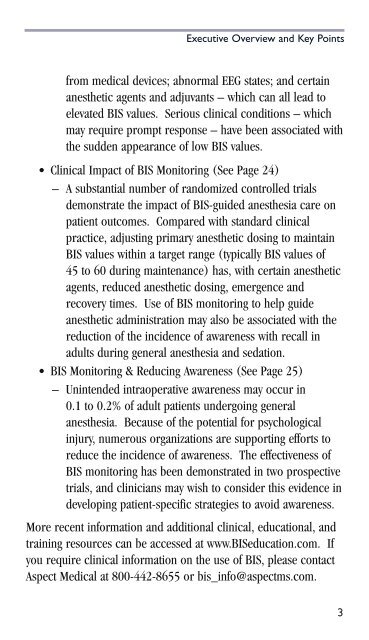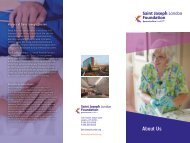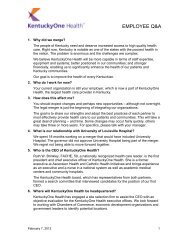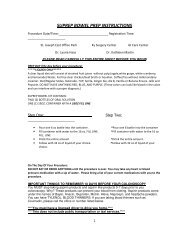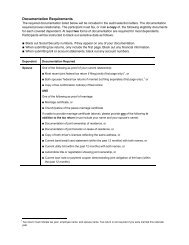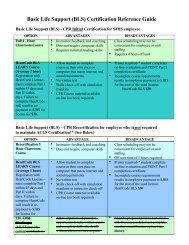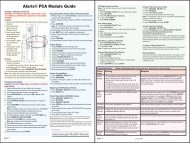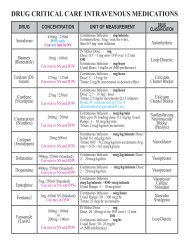BIS guide for clinicians
BIS guide for clinicians
BIS guide for clinicians
You also want an ePaper? Increase the reach of your titles
YUMPU automatically turns print PDFs into web optimized ePapers that Google loves.
Executive Overview and Key Points<br />
from medical devices; abnormal EEG states; and certain<br />
anesthetic agents and adjuvants – which can all lead to<br />
elevated <strong>BIS</strong> values. Serious clinical conditions – which<br />
may require prompt response – have been associated with<br />
the sudden appearance of low <strong>BIS</strong> values.<br />
• Clinical Impact of <strong>BIS</strong> Monitoring (See Page 24)<br />
– A substantial number of randomized controlled trials<br />
demonstrate the impact of <strong>BIS</strong>-<strong>guide</strong>d anesthesia care on<br />
patient outcomes. Compared with standard clinical<br />
practice, adjusting primary anesthetic dosing to maintain<br />
<strong>BIS</strong> values within a target range (typically <strong>BIS</strong> values of<br />
45 to 60 during maintenance) has, with certain anesthetic<br />
agents, reduced anesthetic dosing, emergence and<br />
recovery times. Use of <strong>BIS</strong> monitoring to help <strong>guide</strong><br />
anesthetic administration may also be associated with the<br />
reduction of the incidence of awareness with recall in<br />
adults during general anesthesia and sedation.<br />
• <strong>BIS</strong> Monitoring & Reducing Awareness (See Page 25)<br />
– Unintended intraoperative awareness may occur in<br />
0.1 to 0.2% of adult patients undergoing general<br />
anesthesia. Because of the potential <strong>for</strong> psychological<br />
injury, numerous organizations are supporting ef<strong>for</strong>ts to<br />
reduce the incidence of awareness. The effectiveness of<br />
<strong>BIS</strong> monitoring has been demonstrated in two prospective<br />
trials, and <strong>clinicians</strong> may wish to consider this evidence in<br />
developing patient-specific strategies to avoid awareness.<br />
More recent in<strong>for</strong>mation and additional clinical, educational, and<br />
training resources can be accessed at www.<strong>BIS</strong>education.com. If<br />
you require clinical in<strong>for</strong>mation on the use of <strong>BIS</strong>, please contact<br />
Aspect Medical at 800-442-8655 or bis_info@aspectms.com.<br />
3


